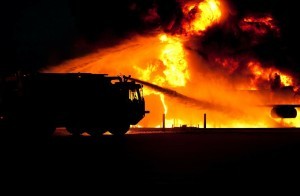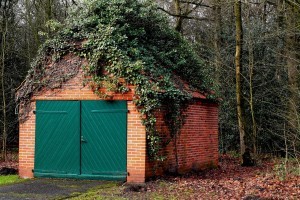3 Tips for a Fire-Resistant Landscape
 Fire damage can be devastating and with California in the midst of a historic drought, the threat of wildfire and widespread destruction is higher than ever. These 3 tips for a fire-resistant landscape could help protect your home during a disaster, or provide the time you need to evacuate your loved ones.
Fire damage can be devastating and with California in the midst of a historic drought, the threat of wildfire and widespread destruction is higher than ever. These 3 tips for a fire-resistant landscape could help protect your home during a disaster, or provide the time you need to evacuate your loved ones.
1) Create a Defensible Space
The first step to reducing the risk of fire damage to your home is to remove flammable vegetation and create a working defensible space. Start by removing all dead shrubs, plants and trees from around the house. Next, trim back excess leaves, low-hanging branches and plant parts that could threaten the home. Replace dense plants that are likely to burn with fire-resistant plants, and finally, create a safe zone around the home with hardscaping, decks, swimming pools and stone walls. Also, while selecting and installing your new plants, be sure to leave enough space among the plantings to prevent fire from spreading.
2) Choose Fire Resistant Materials
 Your local nursery should have advice on the best plants for fire resistance. While there are no “fire-proof” options, plants with a low sap or resin content and high moisture are considered less flammable.
Your local nursery should have advice on the best plants for fire resistance. While there are no “fire-proof” options, plants with a low sap or resin content and high moisture are considered less flammable.
Fire-Resistant Plants, Shrubs & Trees Include:
Aloe, Bush honeysuckle, Cherry, Coastal live oak, Cotoneaster, Currant, Hedging roses, Iceplant, Maple, Plant hardwood, Poplar, Rockrose, Shrub apples, and Sumac.
Conifers, such as pine or fir trees, are more flammable than the plantings listed above. During your landscaping project, use surfacing options like mulch, flower beds, rock and ground cover to fill in bare spaces and create firebreaks.
3) Maintain Your Property
 One of the best protections against fire damage for your home is a watered and well-pruned green belt around the home.
One of the best protections against fire damage for your home is a watered and well-pruned green belt around the home.
Maintenance Tips for Fire Resistance Include:
- Trim grass within 100 feet of the home regularly.
- Keep flammable liquids, materials, solvents, and firewood contained and at least 30 feet from the house.
- Keep plants around the house watered and healthy.
- Install and maintain smoke alarms throughout your home—at least one per level of your home.
While there are no guarantees in case of a fire, these tips can not only help to keep your home safe, but lower your utility bills by requiring less water for your landscaping.
Has your home or property been damaged by fire?
Cal-Best Construction can help! We have restored damaged commercial and residential buildings throughout Southern California for over 30 years. Contact us online or call 714.630.1180—we look forward to assisting you!
